It is July when traditionally gardens are at their peak , the perennials are in full flower , shrubs in blossom and the trick is now to keep it going until the first frosts in November !
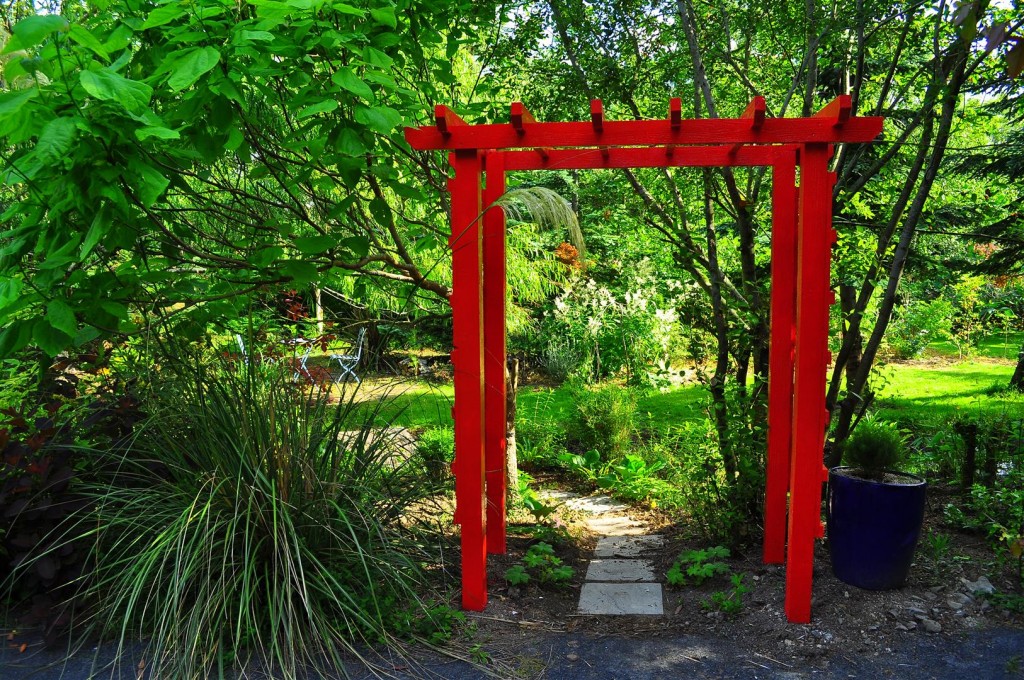
The new Pergola in the lower garden given the full slapper treatment of pillar box red paint ! July 2015
Rodgersia and hostas are at their best in July and although both like damp conditions I have these planted in dryish soil in the front garden although I water regularly on hot days .
Well the new paths in the lower field have been inspected by Snezana who is currently home on leave from OSCE duties in Eastern Ukraine …..and who reluctantly conceded that the finished project which had gone ahead without her input is not ” Legoland ” after all but in fact works …. and ” actually improves the garden ……. and I love it … love it” !!
Nothing is forever in gardening terms and this stone trough which I bought a few years ago in the Kilkenny Architectural salvage yard has been moved previously to three or four different locations throughout the garden and none really worked .
Originally I fell in love with it for the front of the house but saw immediately when placed there that the modern red brick frontage of the house didn’t suit it so off it went on its travels every so often over the past six years when Peter had the digger here ….. in the meantime the gravel garden had taken off , very slowly it has to be said as it is gravel laid over a hard core base with no soil so plants have to fight for survival and during the recent path build I tried it in the gravel area and immediately it said “ I ‘m home ” !!
While on the subject of natural stone I enjoyed a visit earlier in July from Carl Wright who has built a famous garden in the most inhospitable stony terrain in Ireland …. Caher Bridge Garden in the Burren in Co. Clare on the west coast of Ireland . Carl was on a rare day off from his own garden and paid a visit to Clonmel where he visited Petrovska Garden .
Carl has carved a garden out of three acres of Burren solid rock , importing over 800 tonnes of soil , all of which he sieves by hand for weeds and has built up a unique collection of plants while sculpting the most wonderful stone walls and abstract art including a Japanese inspired Moon Gate . Caher Garden has featured in the recent seminal work by Jane Power “ The Irish Garden ”.
Carl was kind enough to write about his visit here on the Caher Bridge Garden Facebook Page
“ I recently took a little trip to visit a few gardens in Co Tipperary. Including the incredible creation of Michael & Snezana O’Riordan, – Petrovska Garden. It is a wild, unique and interesting project covering around seven acres of very wet woodland/bogland. Michael has created a series of wooden walkways & paths, mostly raised above water, which wind their way around the natural wilderness bringing you into intimate contact with the natural surroundings here. It’s like an adventure through some primieval swamp and has an almost alien & mystical like feel to it. The journey is puntuaced by little ‘garden spaces’, glades, borders, stunning water features and architechtural features here and there to add to the interest. The garden is open by appointment and all the relevant details can be found on their FB page.
The Tipperary Garden Trail Open Charity Weekend on the last weekend of June every year is a great opportunity to meet all sorts of people and having all weather paths is a great help as it keeps people moving and I enjoy seeing others enjoy the garden and the resulting feedback is welcome as it is interesting to see other people’s take on your work . Of course the garden doesen’t suit every person and my style of wild gardening or to be more precise my liking for keeping the plants and trees just on the edge of wildness … as Dolly Parton once put it “ it is not cheap to look this trashy ”!
This is the fourth year we have held the garden charity event for the Clonmel Lions Club and again we enjoyed good weather with no rain … a real bonus for visitors and for the numbers attending . I enjoy the two day event hectic and all as it is and I try and have a word with every visitor and over the years have met some interesting people and learnt new things about gardening particularly with the identification of various wild flowers and herbs in the lower garden area .
The Lions Club committee is very good to me , they organise a roster so that someone is here at all times to man the entrance which leaves me free to meet and greet and to cap it all they arrive with assorted home made cakes and buns so that everyone in need of a tea or coffee is looked after …. I couldn’t do the weekend without them so a big Thank You to Pascal , Noeline , Rikki , Patricia , Donagh , Fiona and Mary !
The accompanying photo shows a beautiful architectural flowering perennial persicaria which I was given a clump of a few years ago out of her own garden by Susan from the Clonmel Garden Centre who said it would grow anywhere but could be invasive so I shoved it behind a bed backing on to the brambles in the lower field where I figured it could romp away and not be a nuisance and sure enough it grew away and every summer I saw it’s white flowers from a distance , nothing special but it was always there in an unlooked at back of border area .
All changed this spring when I cleared away all the brambles and reclaimed this area and suddenly BOOM the persicaria took off and has become a stunner .
This persicaria has only recently been renamed from a polygonum and is part of the knotweed family and gardeners are wary of anything with the name knotweed owing to the infamous reputation of the japanese knotweed which will slowly eat the neighbourhood but although the same family it is not invasive or rampant and dosen’t spread from seed or underground rhyzomes . I put a photo of it up on Facebook yesterday and Carl Wright identified it as pericaria polymorpho and next spring I will divide it up and plant it in other wet areas of the garden as It really is a stunner .
Actually this is the area that six months ago in January I cleared the brambles from and reseeded a new lawn … still rough and a constant job of rooting out emerging brambles but getting there !
How it looks six months later in July 2015
The same Susan visited the garden again this week and brought her pet barn owl , Willow ,on a tour …. I last saw Willow two months ago when he was six weeks old and he has grown into a beautiful young male owl and Susan who is vegetarian now has a freezer stocked with frozen mice !
July is also the month for rambling roses and this is one of the best called rambling rector which is best kept away from anywhere near a path or an area you need to work in regularly as it is a nasty bugger which seems to get a grip on arms , legs and any unsuspecting head that gets in it’s way … great for planting in a boundary area where you can forget about it until it comes into flower for a glorious four weeks when it is a stunner in the garden but I would never plant it on a pergola where people would be passing as it is actually dangerous to be around rambling rector ….. a name given in the UK as they have rectors who according to the daily gossip papers like to ramble regularly !
July is the month when spring flowering perennials and shrubs need to be tidied up and I have been cutting out the flowering stems of the euphorbia wulfeni which put up such a great show until late May , the old flowering stems need to be cut out at the base as this leaves the new shoots to develop and be ready for next year ….. gloves are needed here as the stems exude a milky sap when cut which stings if in contact with any cuts or scratches … not a good idea to go straight from pruning roses to cutting back euphorbia as I know from experience and don’t wipe your eyes during the operation !
Another visitor to the garden , this time a very unwelcome one as the dreaded parott feather has been making a comeback in the water garden but at least this time I am aware of how invasive this native of the southern states of the US is and I took out barrow fulls this week ….. incidentally when removing any debris or plant material even algae from water you need to leave it sit for a day or two near the water to allow any snails , insects , frogs , that might have been swept up a chance to make it’s way back to the water . I have written about parrot feather before as I had a three year battle to get rid of it in the lower garden area where it had taken over completely ….. once you have it in your garden you never really get rid of it as it regenerates from the smallest piece but when you have it under control it is relatively easy to keep it in check with regular checks wherever it has reappeared which is what I was doing here ….mind you it looks pretty and you think aaaaw …. but show no mercy !!
While I was in the water garden area I saw that the arum lilies I had planted a few years ago into the water ‘s edge had really developed into imposing groups ….. they get no attention nor do they need it but every year the blooms get better and even when not in flower arum lilies have a magnificent architectural look about them .
Alchemis Molis with the common name of Lady’s Mantle is the best gardening thug in the plant world and self seeds away madly especially into gravel areas .
I was always puzzled by term “ yard ” as in front yard that americans use to describe their front lawn or garden and this week an article in the UK Telegraph explains that those acres of lawn you see in the movies surrounding middle class American homes are actually strictly enforced by the authorities who prohibit the planting of flower beds etc. and even fine and insist on their removal .Daniela Coray , an American garden designer who studied in the UK , writes about her career as a landscaper in the US “there is a deep cultural connection to the lawn and it’s measure of the home owner’s achievement of the American dream …it’s a status symbol , we don’t have a robust gardening culture and I rarely have clients interested in planting . American gardens are about kerb appeal – a desire to appeal to future buyers or to show off the home rather than a love of gardening itselfand therefore much planting is low maintenance and evergreen .”
The article further states “ this often leads to an anaemic landscape devoidof the home owner’s personalityor any connection to the architecture of the home . English gardeners on the other hand view their landscapes with more respect and express themselves more through gardening ” .
Not an opinion that will endear Daniela to her prospective clients in the US but I have seen a similar trend in Croatia where the wealthy aspire to a british style garden with huge green lawns which need huge amounts of daily watering to achieve and maintain while their natural Mediterranean style is not appreciated .. a status thing really .
Family visit to the garden from Montenegro …. my daughter Claire with Marko and Mila …. the tree house is named for Marko as we built it just after he was born five years ago and the photo is a useful reference as to how he has grown after his last visit three years ago !!
To end on a historical note I commissioned Ronan , a neighbour who is a stone mason to carve the name into a block of limestone that had been inserted into the front wall years ago and he told me that this block which is about 40 cm. deep had originally come from a plinth that had been laid along the Clonmel Quays 200 years ago in the days of river barge traffic along the River Suir all the way up from Waterford Port and a nice feeling to have such antiquity in the garden along with the railway sleepers which I bought ten years ago for the raised bed and which originally came from the Austro Hungarian railway built in Bosnia in the 1890’s that ran from Sarajevo to the Dalmatian coast .
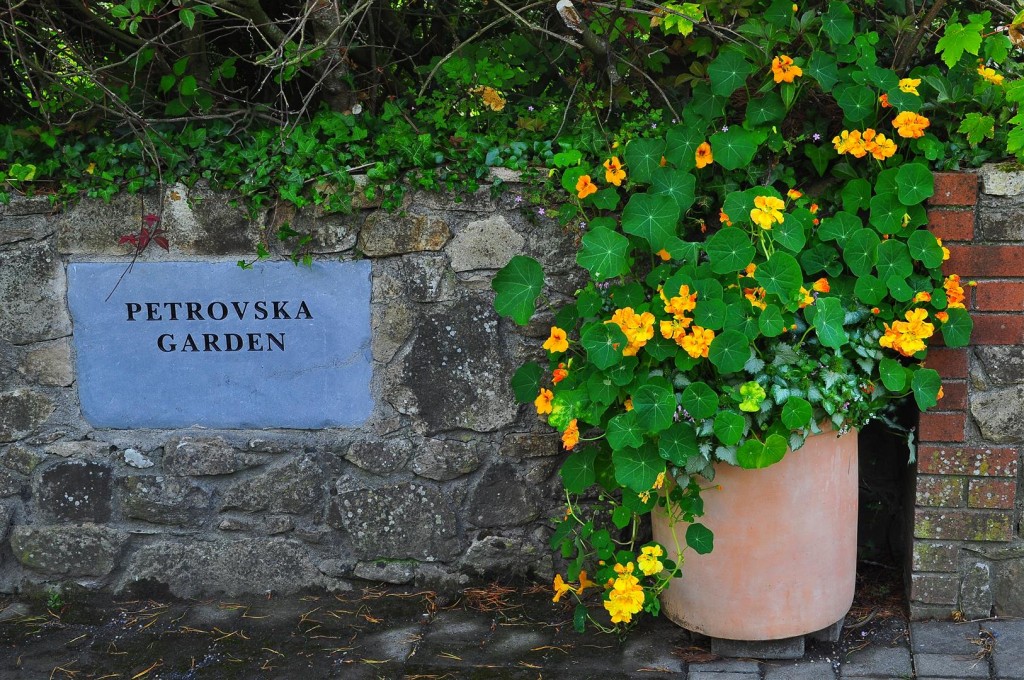
The recent engraving for Petrovska Garden beside a pot full of nosturtium and lamium Chablis July 2015


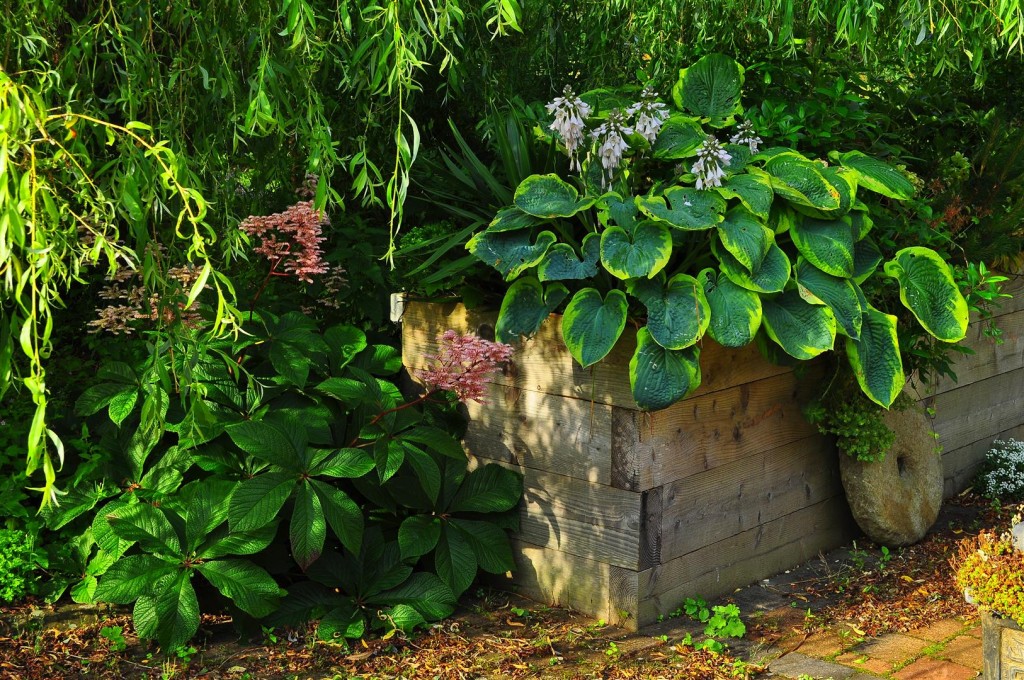

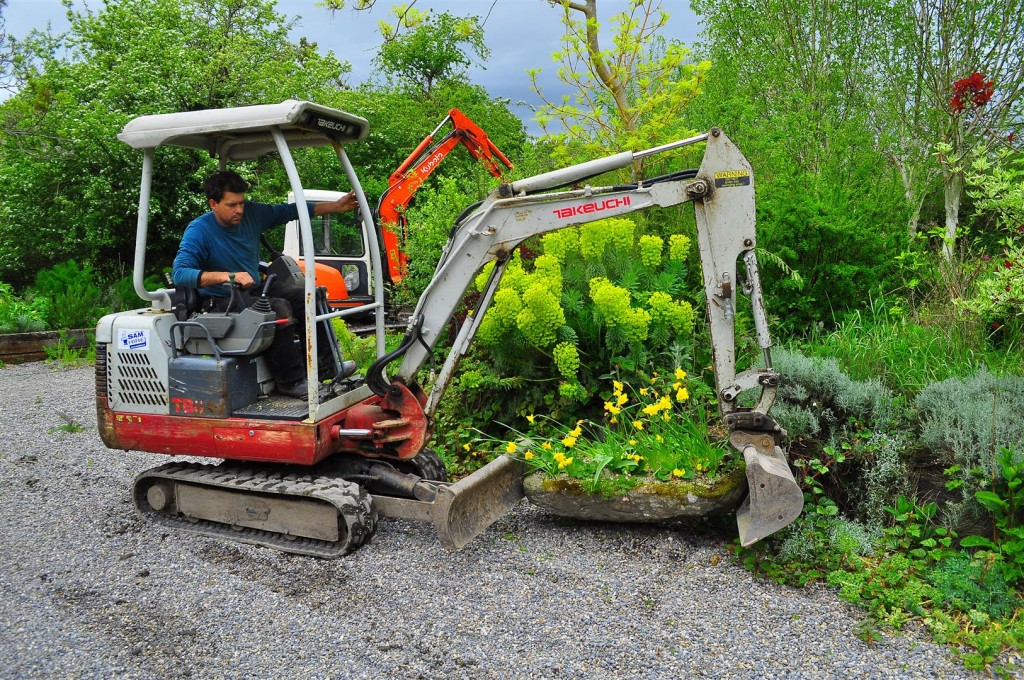

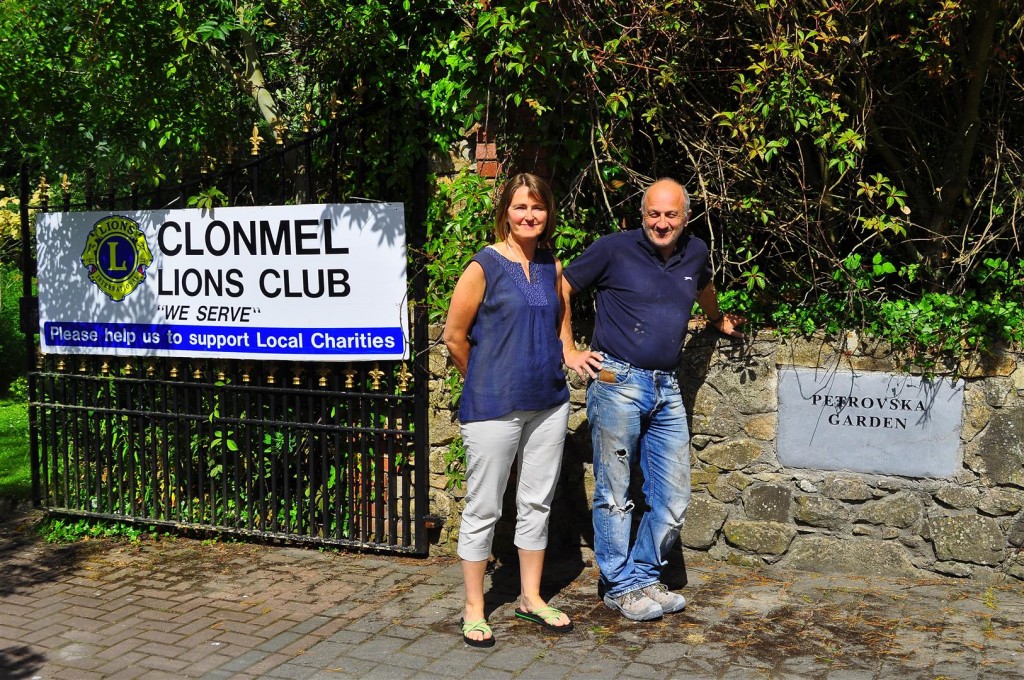

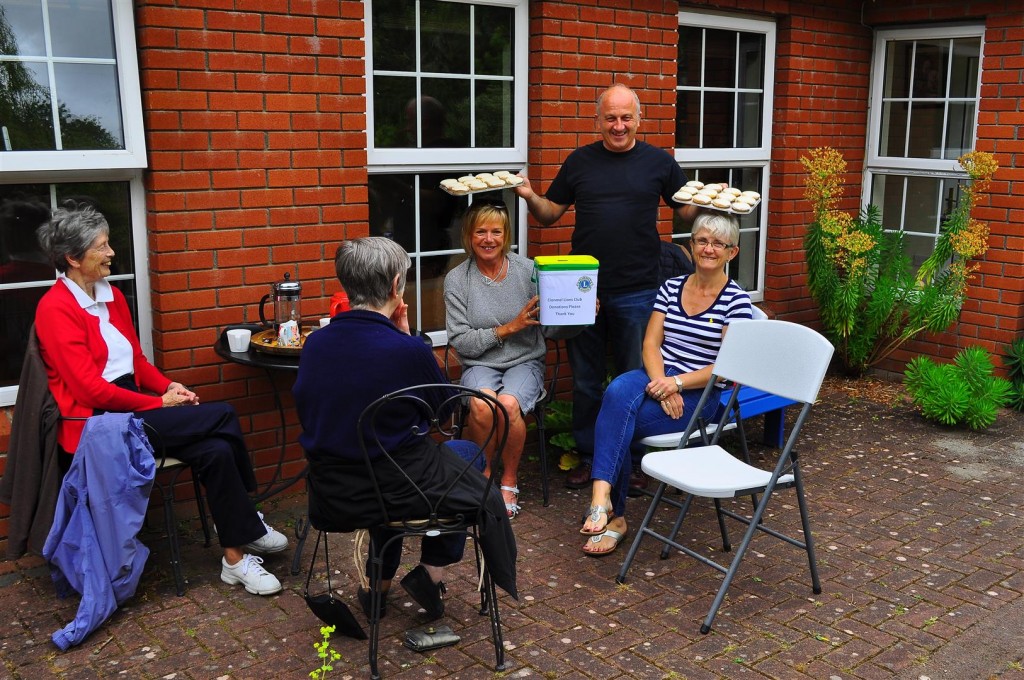
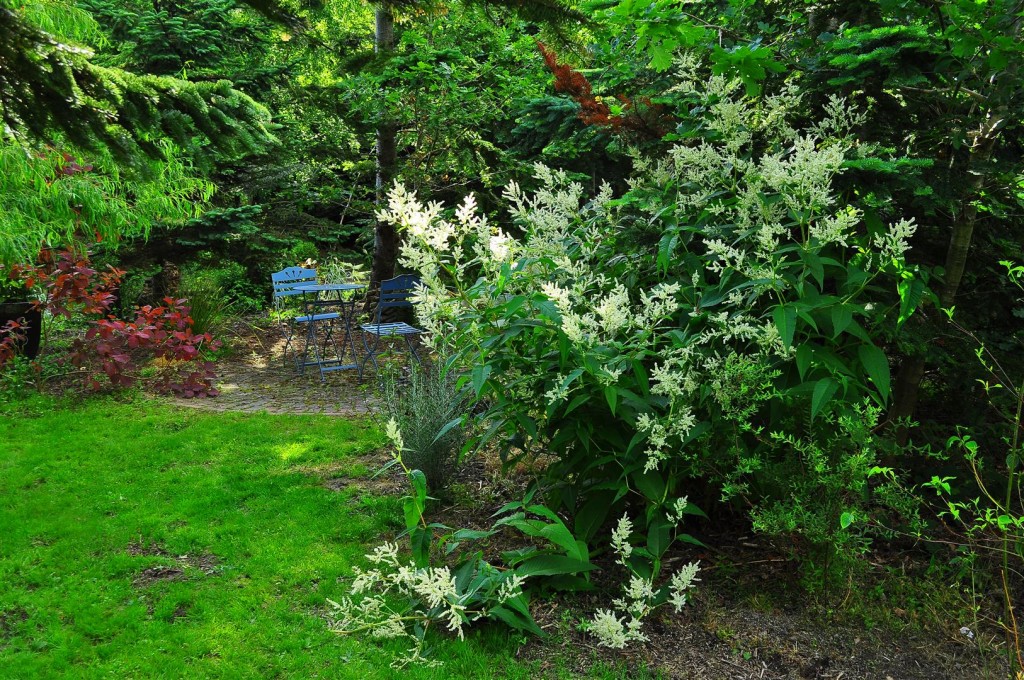
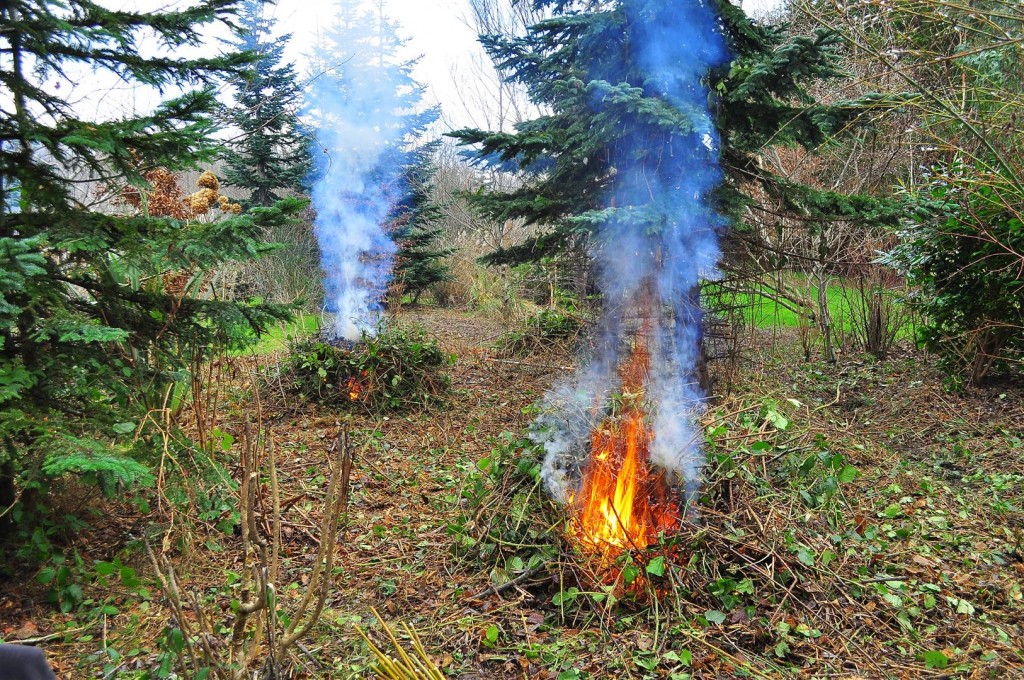
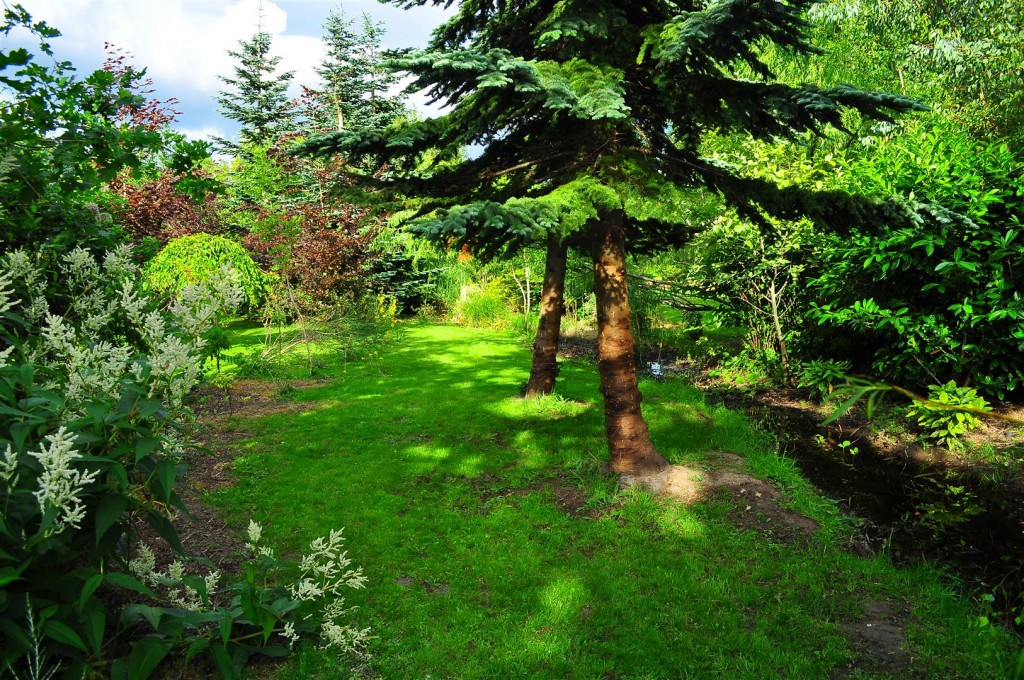
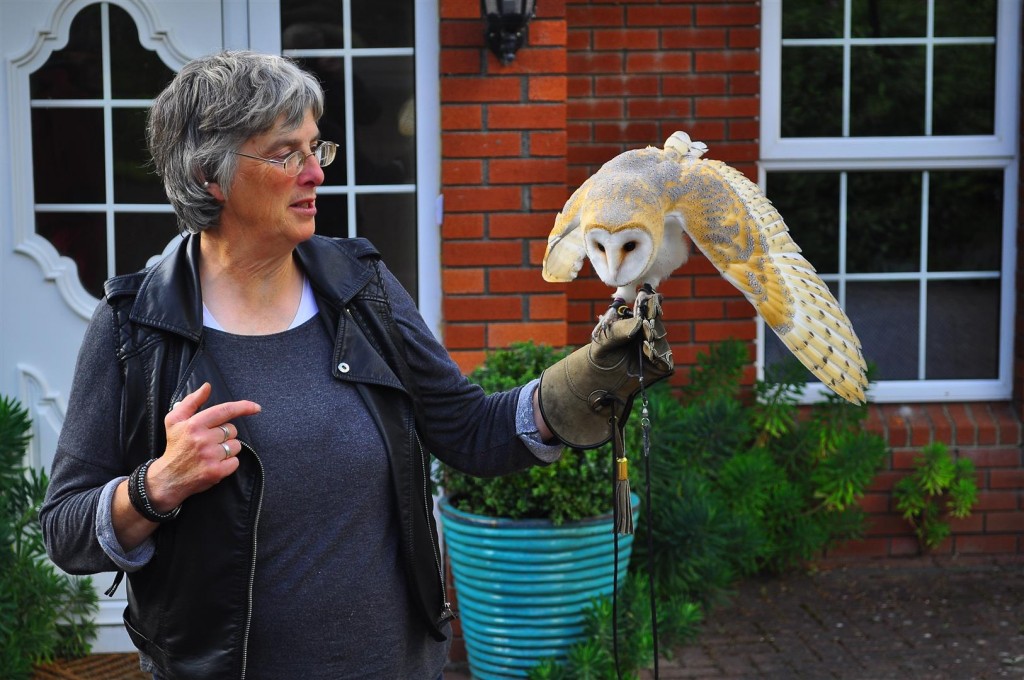
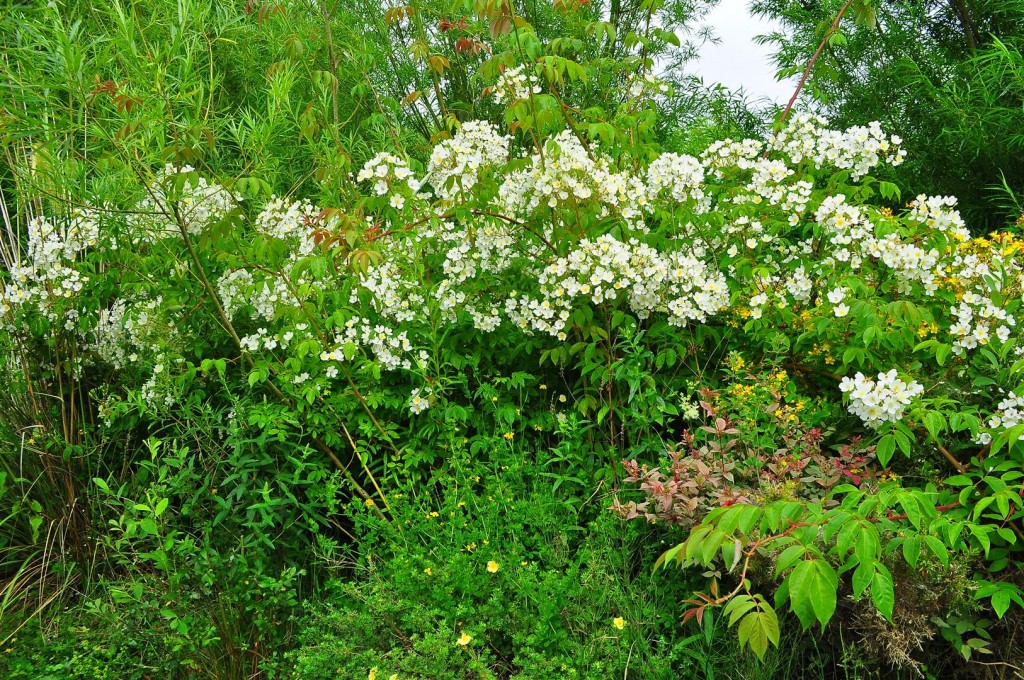
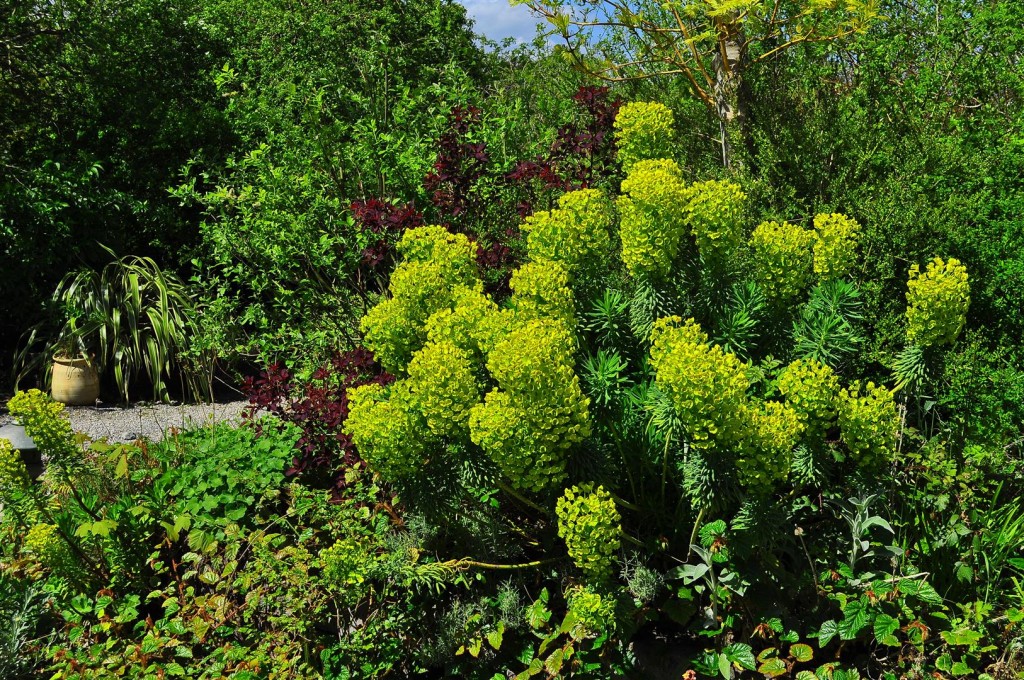
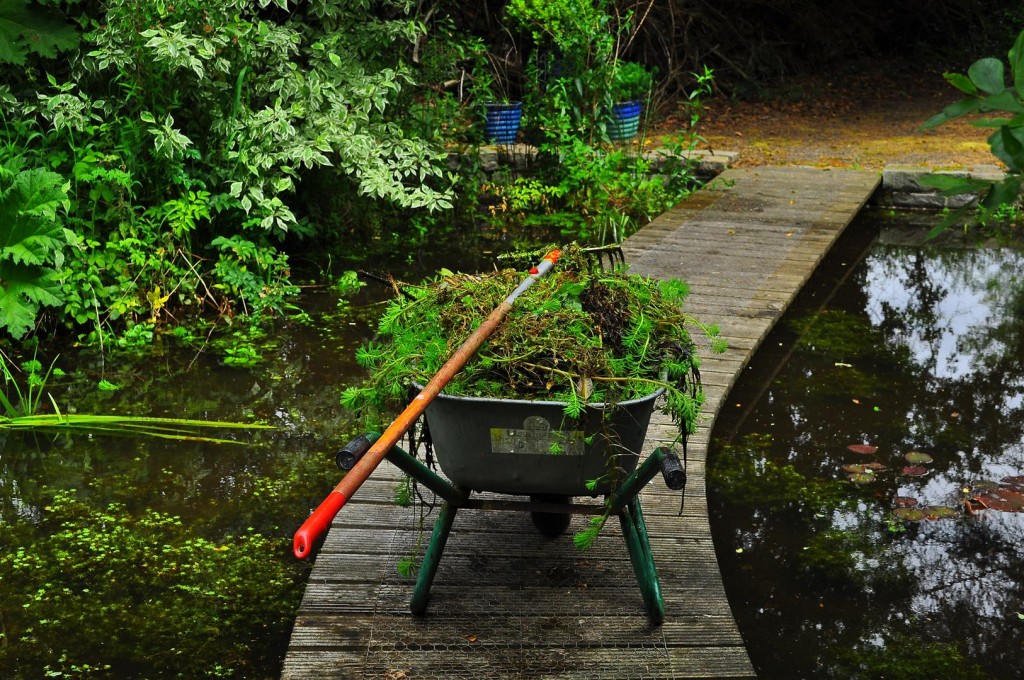
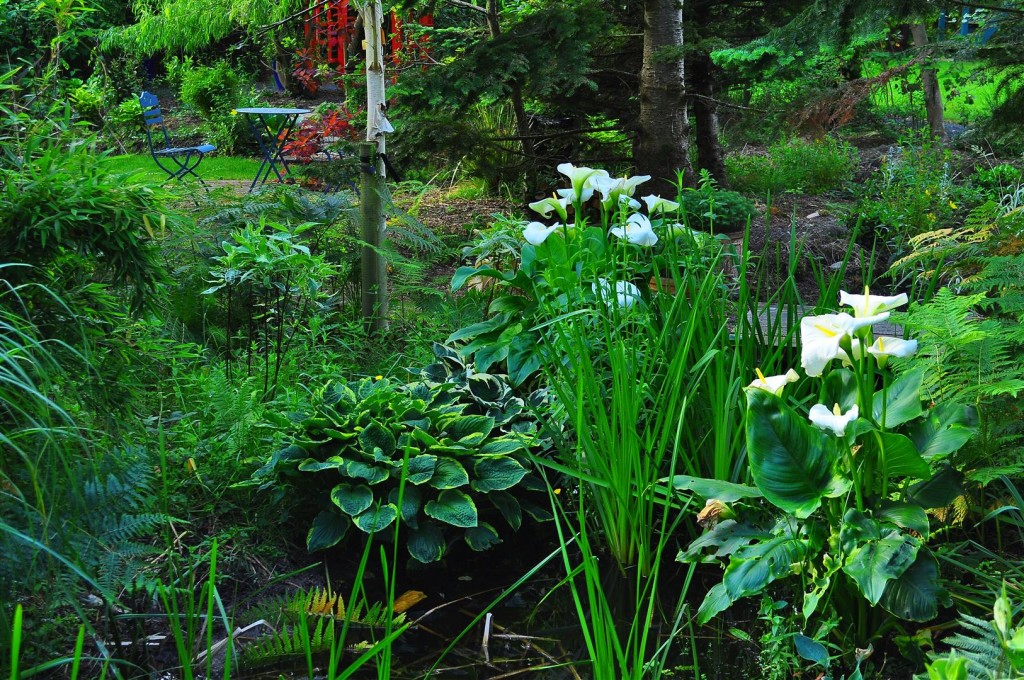
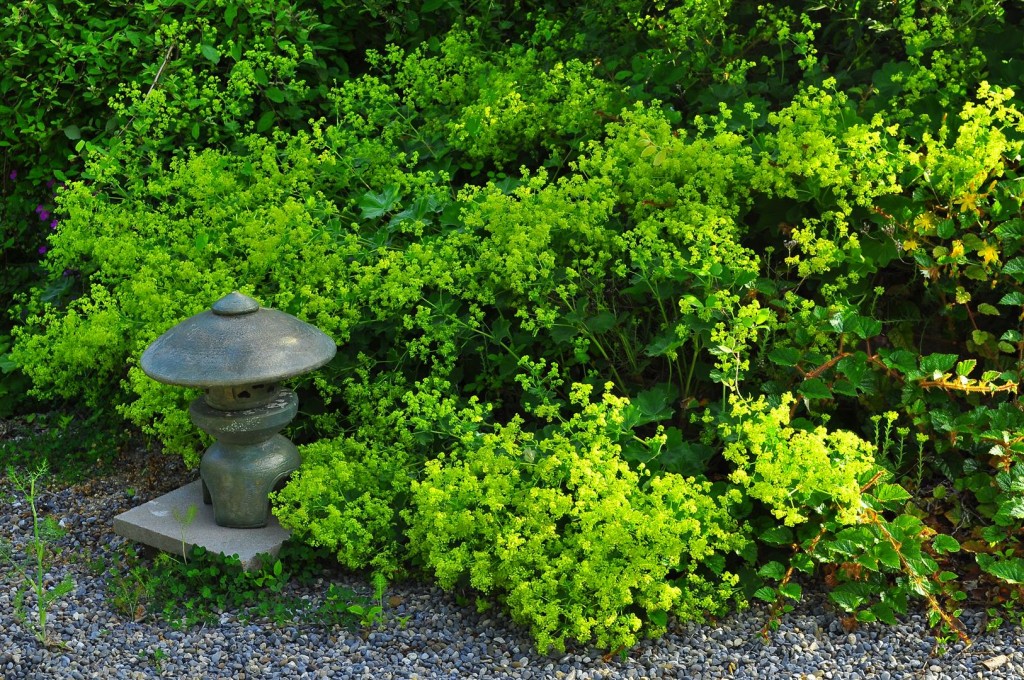

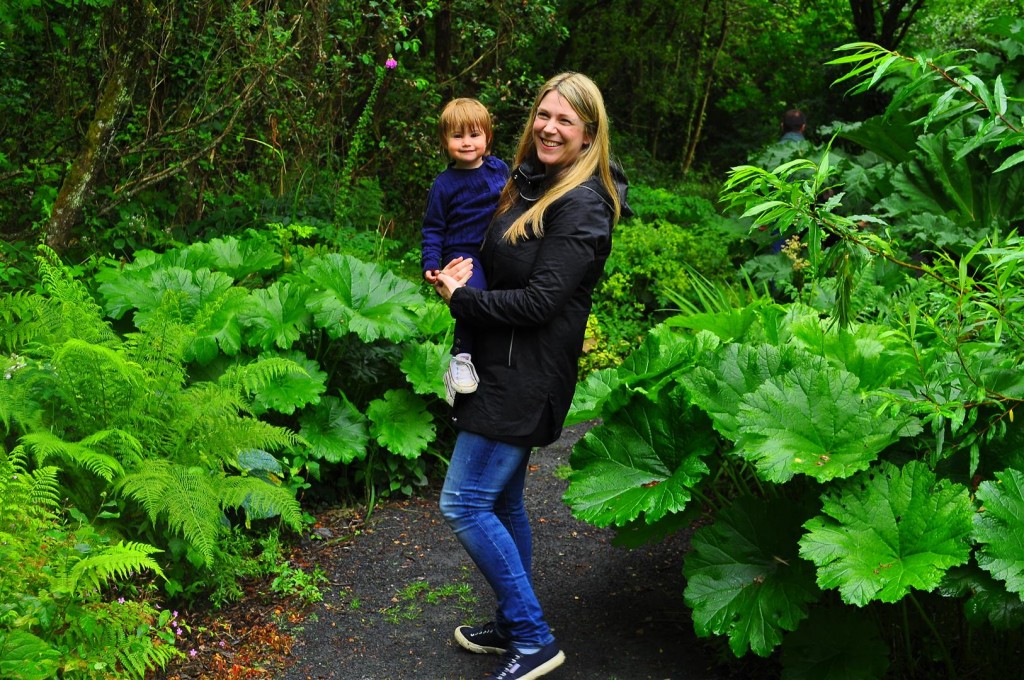
Leave a Reply